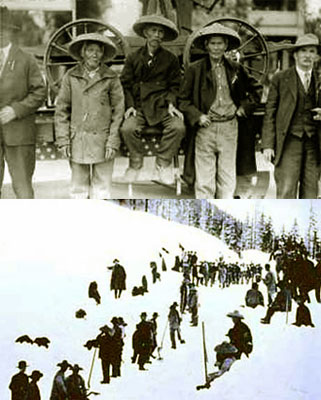Growth of the Railroad (continued)
 Railroad laborers |
The building of the tracks was hard work. While it was easier to lay the tracks on flat lands, the workers also had to contend with mountains. The tracks either had to go over mountains or through them . Dangerous explosives were used to blast tunnels through the mountain regions. The Union Pacific line was built by a different group of laborers. Many were Southerners who were displaced by the war. Irish immigrants also made up a large portion of the labor force. They traveled along as they built the railroad and settled for the night in tent towns.
The building of the Transcontinental Railroad was not the end of railroad construction. The more track that was built, the more industrial opportunity was possible. By 1900 there was more than 193,000 miles of track built across America. One business man known for the money he made as a railroad tycoon is Cornelius Vanderbilt. He is known for making a fortune by consolidating railroad companies to get rid of competition and have greater control of price. Access to the railroad made America seem smaller and opened up new territory for immigrants to settle and find their manifest destiny.